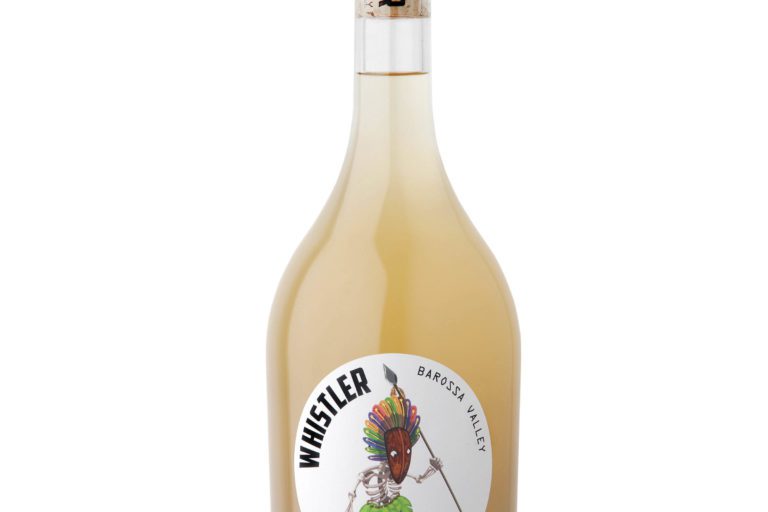GOURMET
The Rise of Organic and Biodynamic Wines in Australia

WORDS: PHOTOGRAPHY
The subject of organic and biodynamic winemaking continues to resonate with a growing segment of the wine-drinking community.
We are consuming more and more organic and biodynamic wine — not just here in Australia, but worldwide. In a Good Food article last year, Callan Boys stated, “Globally, the consumption of organic and biodynamic wines has almost doubled from 349 million bottles in 2012 to 676 million bottles in 2017.”
Furthermore, he added, “By 2022, it is expected that one billion bottles will be consumed every year.”
Specifically, according to the most trusted researcher in alcohol trends, the IWSR, “by 2022, worldwide consumption of still wine is projected to reach 2.43 billion nine-litre cases”. The organic wine subcategory is expected to post the strongest increases (+9.2 per cent compound annual growth 2017– 2022).
“Overall, total still wine volume is increasing slightly but remains largely flat, while the organic wine market is forecasted to reach 87.5 million cases by 2022,” IWSR’s CEO Mark Meek said.
Here in Australia, Millennials are playing a role in the ever-growing market for all things Australian certified organic and biodynamic, including wine. In short, organic wine sales are booming, and are said to be increasing around 50 per cent each year on the previous year, with current sales estimated to be around $31 million.
I suspect the true figure is actually much higher, but this is still only a drop in the ocean accounting for less than 1 per cent of Australia’s total wine sales.
Louisa Rose, head of winemaking at Yalumba in South Australia’s Barossa Valley, says in Good Food that “the rise of organic wine will continue to be significant, but it will take longer than 10 years for it to become more prevalent than wine made with non-organic grapes”.
The appeal of organic and biodynamic wines
Organic wine is fermented grape juice using grapes sourced from organic vineyards, which receive no chemicals such as herbicides, fertilizers, fungicides, or pesticides. No other artificially made compounds are used to help grow vines, control pests and weeds, or to increase yields.
Being organic doesn’t mean it is vegan or preservative-free wine. The wine can be certified using strict and measurable guidelines from legitimate certifying bodies or non-certified.
I always look for the certification logo on the back or front label to ensure it’s the real deal.
Biodynamic wine is the big brother or sister of organic wine. Picking up on the ideals and practices of organic winemaking, biodynamic viticulture takes it further by enriching the soil, planting, pruning, and harvesting based on the moon cycle and astrological signs.
Natural wine is like the cousin of organic and biodynamic wine where, according to Vineful, “the grapes have been handpicked and crushed and nothing is added to tanks during fermentation (acid/sugar/enzymes).
This allows the fruit to ferment on its own using the naturally occurring yeast on the grape’s skin. Natural wines are unfiltered, so you’ll often see sediment or ‘cloudiness’ in the bottle. Unlike organic wines, there is no consistent regulation or certification in relation to natural wines.”
The added benefit of such wines is there are less chemicals and additions to the winemaking process, thus making them cleaner in flavour (although this could be argued this is not the case with some natural wines), wholesome, healthier, and good for you. They are also arguably better for the environment taking biodynamic farming practices to the next level that take care of the land for future generations.
Wine producers of organic, biodynamic, and natural wines can be made as still whites, reds, or roses and even sparklings. The still wines can be clean, bright or cloudy while sparkling wines can be made in the traditional method — clean and bright — or by pétillant-naturale, or pét-nat as it is affectionately known among the cool cats.
Here, wine is bottled prior to fermentation where the fizz is created by the natural sugars left in the ferment. The wine is crown sealed with no filtering or fining or added dosage thus making the wine cloudy and as natural as you can get.
What To Drink?
My pick of the organic and biodynamic wine from New Zealand is Quartz Reef, a certified organic and biodynamic vineyard, and is made by Rudi Bauer (twice voted NZ Winemaker of the Year and finalist in the Oscars of wine awards, the Feinschmeckers). Quartz Reef Methode Traditionnelle Non-Vintage is made from both chardonnay and pinot noir, and spends about 24 months on lees.
Want to go the full hog? Try Whistler’s Back to Basics skin contact wine — it’s orange! The Pfeiffers are a generational grape-growing family of more than 80 years and own the Whistler wine label.
Josh Pfeiffer is the winemaking son of Martin, who started plantings in 1997 while working for Penfolds. He graduated from Adelaide University with a degree in oenology in 2007, and with winemaking stints at Henschke and Two Hands, became the grape-grower and winemaker for Whistler Wines in 2013.
The Back to Basics wine is made like a red wine using riesling, semillon, white frontignac and pinot blanc (these grapes may vary from vintage to vintage), with prolonged whole-bunch skin contact. The wine is completely natural, with no additions, no sulphur, no fining agents or acids or yeasts. The colour is orange with a cloudy density and has aromas of lemon and apple; a crisp, clean palate ensues, and it is definitely not stinky!
In the red wine category try Yangarra PF Shiraz from biodynamic producer McLaren Vale, the PF standing for preservative free.
Yangarra is a five-star James Halliday-rated winery that is certified organic and biodynamic.
The PF Shiraz is made from certified organic farming of single-vineyard fruit, grown without synthetic chemicals, herbicides, and fungicides, and without any additions such as acids, tannins, or finings. The wine was fermented using natural yeasts and is not matured in oak. The wine is dense in colour, rich and ripe, with a medium body showing notes of dark cherry and plums complimented by savoury notes of earth and hay and black pepper.
It’s delicious!
Try wines from Cullen Margaret River. My motto is Cullen anything, especially the chardonnay and cabernets from this producer. Cullen is a five-star James Halliday-rated winery, and the winemaker, Vanya Cullen, is the current Australian Winemaker of the Year. The family are one of the early pioneers of Margaret River.
The vineyard became certified organic around 2004, but Vanya is a master of her craft going beyond organics and practicing biodynamics for just as many years.
She has been making pét-nat wines (pétillant naturel, which is French for ‘naturally sparkling’) for a few years now, and they are bloody delicious. Here, wine is bottled prior to fermentation where the fizz is created by the natural sugars left in the ferment.
The wine is crown-sealed, with no filtering or fining or added dosage thus making the wine cloudy and as biodynamically prepared and natural as you can get.
The Cullen New Moon 2018 Pét-Nat is made from 100 per cent chenin blanc and receives no oak treatment at all. This wine is light yellow to orange in colour, cloudy showing apple and pear notes with a good amount of fizz finishing crisp, clean, and dry! It’s absolutely smashable.
Finally, there’s no doubt in my mind that certified organic and biodynamic wines, and many non-certified ones, are superior in quality, clean and healthy while also taking care of the land through biodynamic practices.
In addition, research shows that organic and biodynamic wine has more antioxidants, vitamins, and minerals than conventional wines, as the vines are able to access better nutrition through organic soil management. Look out for them; they are on the move!











